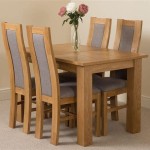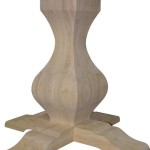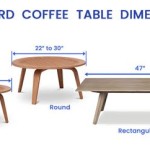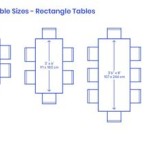Selecting the Perfect 8-Person Farmhouse Dining Table
The dining table serves as a focal point in many homes, representing more than just a place to eat. It's a gathering spot for family and friends, a space for conversation, and often, the heart of the household. For larger families or those who frequently entertain, an 8-person farmhouse dining table presents an ideal solution, blending functionality with rustic charm. Choosing the right table, however, requires careful consideration of various factors, including size, material, style, and overall design.
The farmhouse aesthetic, characterized by its warmth, simplicity, and connection to natural materials, has gained considerable popularity in recent years. An 8-person farmhouse dining table embodies this style, offering a substantial and inviting surface for shared meals and gatherings. These tables often feature robust construction, showcasing the natural beauty of wood and incorporating elements such as distressed finishes, chunky legs, and planked tops. This article will delve into the key aspects of selecting an 8-person farmhouse dining table, providing guidance to ensure a purchase that meets both practical needs and aesthetic preferences.
Key Point 1: Determining the Appropriate Size and Dimensions
The size of the dining table is paramount. An 8-person farmhouse dining table needs to comfortably accommodate eight individuals while also fitting appropriately within the designated dining space. Overcrowding the room can impede movement and create an uncomfortable dining experience, while a table that is too small may not adequately serve its intended purpose. Careful measurement of the dining area is the first crucial step in the selection process.
As a general guideline, allow approximately 24 inches of width per person at the table. For an 8-person table, this translates to a minimum length of 96 inches (8 feet). However, this is a baseline measurement and may need adjustment based on the table's width and chair size. Consider the depth of the chairs when pushed back from the table. A minimum of 36 inches of clearance between the edge of the table and any walls or furniture is recommended to allow for comfortable movement around the table. Ideally, 42 to 48 inches of clearance provides even more space.
The shape of the table also impacts its size requirements. Rectangular tables are the most common for seating larger groups, as they maximize the available seating along the length of the table. Oval tables offer a similar linear seating arrangement with softened corners. Round tables, while visually appealing, can be less efficient for seating eight people unless the table is very large, which may not be practical in smaller dining rooms. Square tables for eight people can also be quite large and demand a large, square room.
When measuring the dining space, consider any architectural features that might impact the table placement, such as doorways, windows, or built-in cabinetry. Visualize the table in the space, accounting for the surrounding furniture, such as sideboards or buffets. It may be helpful to use masking tape or newspaper to outline the table's dimensions on the floor to get a better sense of its scale and footprint.
Key Point 2: Evaluating Materials and Construction
The material and construction of an 8-person farmhouse dining table directly influence its durability, longevity, and aesthetic appeal. Farmhouse tables are typically constructed from wood, but the type of wood and the construction methods used can vary significantly. Solid wood tables are generally considered the most durable and desirable, offering a natural grain and a substantial feel. Common wood choices include oak, maple, pine, and reclaimed wood.
Oak is a hardwood known for its strength, durability, and distinctive grain pattern. It is a popular choice for farmhouse tables due to its classic appearance and ability to withstand daily use. Maple is another hardwood that is slightly lighter in color than oak and features a finer grain. It is also a durable and long-lasting option. Pine is a softwood that is more affordable than oak or maple but is less resistant to scratches and dents. Pine tables often have a rustic appearance due to the natural knots and imperfections in the wood.
Reclaimed wood is an increasingly popular choice for farmhouse tables, offering a unique character and a sustainable option. Reclaimed wood can come from a variety of sources, such as old barns, factories, or warehouses. It often features a distressed finish, showing signs of age and use, which adds to its rustic charm. When considering a reclaimed wood table, it is important to ensure that the wood has been properly treated and sealed to prevent warping or cracking.
Beyond the type of wood, the construction of the table is crucial for its stability and longevity. Look for tables with solid joinery, such as mortise and tenon joints or dovetail joints. These types of joints are stronger and more durable than simple screw or nail connections. The table's legs should be sturdy and well-supported, and the tabletop should be securely attached to the base. Inquire about the table's weight capacity to ensure that it can support the weight of dishes, servingware, and other items.
The finish of the table is also an important consideration. A durable finish will protect the wood from scratches, stains, and moisture. Common finishes for farmhouse tables include varnish, lacquer, and oil-based finishes. Varnish and lacquer provide a hard, protective coating that is resistant to scratches and stains. Oil-based finishes penetrate the wood, enhancing its natural beauty and providing a water-resistant barrier. Consider the level of sheen when choosing a finish. Matte finishes offer a more rustic look, while glossy finishes provide a more formal appearance.
Key Point 3: Harmonizing the Table with the Overall Dining Room Style
While an 8-person farmhouse dining table inherently embodies a specific aesthetic, ensuring it complements the overall style of the dining room is essential. The table should seamlessly integrate with the existing décor, including the wall color, flooring, lighting, and other furniture pieces. Achieving a cohesive look requires careful consideration of color palettes, textures, and design elements.
The color of the table should harmonize with the overall color scheme of the dining room. Natural wood tones, such as oak, maple, or pine, are versatile and can complement a wide range of color palettes. Painted tables can also be a good option, especially for those who want to add a pop of color to the room. White or cream-colored tables are classic choices for farmhouse style, while darker colors like black or navy can create a more dramatic look.
The texture of the table should also be considered in relation to the other textures in the dining room. Farmhouse tables often feature a rustic texture, with visible wood grain and imperfections. Pairing this with smooth, polished surfaces may create an unbalanced look. Consider incorporating other rustic elements into the room, such as woven rugs, linen tablecloths, or distressed wood furniture, to create a cohesive aesthetic.
The style of the table should also be consistent with the overall style of the dining room. Farmhouse style can range from traditional to modern interpretations. A traditional farmhouse table might feature turned legs, a planked top, and a distressed finish. A more modern farmhouse table might have clean lines, a minimalist design, and a smooth finish. Choose a table that aligns with the overall design aesthetic of the room.
The chairs that accompany the table play a significant role in the overall look and feel of the dining room. Consider the style and materials of the chairs in relation to the table. Mismatched chairs can create an eclectic and interesting look, but it is important to ensure that the chairs complement the table in terms of scale and style. Common chair choices for farmhouse tables include Windsor chairs, ladder-back chairs, and upholstered chairs. Benches can also be a good option for seating, adding a casual and rustic touch.
Lighting is another important aspect to consider. A well-placed chandelier or pendant light can enhance the dining room's atmosphere and highlight the table. Choose a light fixture that complements the style of the table and the overall décor of the room. Consider the size and scale of the light fixture in relation to the table and the room. A light fixture that is too small will be overwhelmed by the table, while a light fixture that is too large will dominate the room.
Finally, accessorizing the table with appropriate linens, centerpieces, and servingware can further enhance its aesthetic appeal. A simple linen tablecloth or runner can add a touch of elegance to the table, while a rustic centerpiece, such as a vase of wildflowers or a wooden bowl filled with fruit, can further emphasize the farmhouse style. Choose servingware that complements the table and the overall décor of the room.
By carefully considering the size, materials, construction, and style of an 8-person farmhouse dining table, a homeowner can select a piece that not only meets their practical needs but also enhances the beauty and functionality of their dining space. The right table will become a cherished gathering place for family and friends, creating lasting memories for years to come.

Pin Page

Large Farmhouse Table Long Farm Dining Room Custom Wood Barn Distressed Kitchen

Upoak 2000mm Farmhouse Natural Wooden Dining Table For 8 Person Double Pedestal Homary

Farmhouse Dining Table Deals For 8

8 Person Hotsell Farmhouse Table

8 Person Deals Farmhouse Table

Chvans 72 Solid Wood Dinner Table For 4 10 Adjustable Metal Leg Farmhouse Kitchen Walmart Com

Diy Farmhouse Table Love Grows Wild

Farmhouse Dining Set For Hotsell 8

Dextrus 71 Large Solid Wood Dinner Table For 4 8 Person Rectangular Farmhouse Kitchen Gathering Dining Living Room








